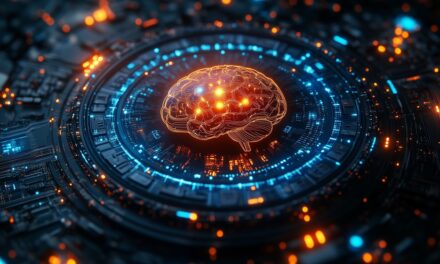Generative AI was taking design beyond traditional automation, in fact, changing how designers create, experiment, and innovate. AI-driven creativity is there to assist designers in their quest for efficiency while unlocking the new unrealized possibilities.
How Generative AI is Redefining Designing
1. Automated Design Generation
- With AI-powered tools, you can come up with untold design variations in a matter of seconds from a set of parameters.
- Give designers their style, color palette, and theme, and AI instantly gives a customized layout.
- Example: On the basis of some initial input, Adobe Sensei and Deep Dream assist designers in creating drastically different and unique compositions.
2. Enhanced Creativity & Idea Generation
- Generation AI can inspire design by analyzing former trends and suggesting further concepts.
- It would establish a mood board, palette, and typography suggestions as a fount of inspiration.
- Helps designers break creative blocks by presenting visual alternatives generated by AI.
Combining automated design generation and idea generation is sufficient to increase your efficiency manifolds. To stand competitive in the increasingly demanding job market, you need to upscale in generative AI to make yourself attractive to employers. If you wondered how to do that, enroll yourself in a generative AI course.
3. Personalized & Adaptive Designs
- AI looks at user behavior and preferences when crafting more personalized designs.
- Websites and applications adaptability can also adjust UI/UX elements while the user is using it to keep them engaged.
- Example: Netflix and Spotify dynamically adjust interface elements according to the preferences of their users.
4. Rapid Prototyping & Wireframing
- AI-driven tools produce wireframes and prototypes very quickly, thus shortening the design cycle.
- Instantly provide working models for speedier feedback.
- Example: Figma’s built-in AI design assistants accelerate the UI/UX workflow.
5. Automated Image & Video Editing
- AI helps enhance images and videos with built-in automatic corrections, object removals, and quality improvements.
- Creates an advantage over manual editing and speeds up content creation.
- Example: Runway ML and Canva use an AI program to automate some aspects of seeing high-end graphic improvements.
6. Smart Layout & Composition Suggestions
- AI suggests optimal placement of design elements based on visual hierarchy principles.
- Ensures balanced layouts with appropriate spacing, typography, and alignment.
- Example: Canva’s AI-powered design recommendations adjust compositions in real-time.
7. Generative 3D Modeling & Architecture
- AI accelerates 3D modeling by generating structures, textures, and visual effects automatically.
- Helps architects and game designers prototype models without extensive manual work.
- Example: NVIDIA’s AI-driven rendering tools create realistic 3D environments effortlessly.
8. Real-Time Content Adaptation
- AI updates digital content dynamically based on real-time user interaction.
- Personalizes website interfaces by analyzing scrolling patterns and click behaviors.
- Example: AI-powered chatbots adapt interface layouts based on user queries.
9. Data-Driven Design Decisions
- From AI, analytics about user interaction become available that assist designers in improving the usability of their layouts.
- Examples are available for A/B testing on improvements, such as heat maps.
- Example: Google’s UX research AI tools provide data-driven advice that guides design for web optimization
10. Accessibility & Inclusive Design
- It guarantees that the designs are accessible to people with disabilities through AI help, which suggests proper contrast ratios and legible fonts.
- Text-to-speech and auto-captioning work to improve the accessibility of digital content.
- For example, AI accessibility tools like Microsoft’s Seeing AI empower inclusive design practices.
The Future of AI in Design
Generative AI is no longer just an assistant; it’s an active collaborator in the creative process. With AI-driven tools becoming more intelligent, the design industry is witnessing a shift toward hyper-personalized, data-driven, and automated creativity. Designers who embrace AI will not only enhance their efficiency but also push the boundaries of innovation.
For those looking to stay ahead in this AI-driven era, enrolling in an AI course by a prestige institute, like the IISc AI course, can be a game-changer. Learning how to harness AI for design can give professionals a competitive edge and help them navigate the evolving digital landscape with confidence.
Generative AI is here to revolutionize design, and those who adapt will shape the future of creativity!





